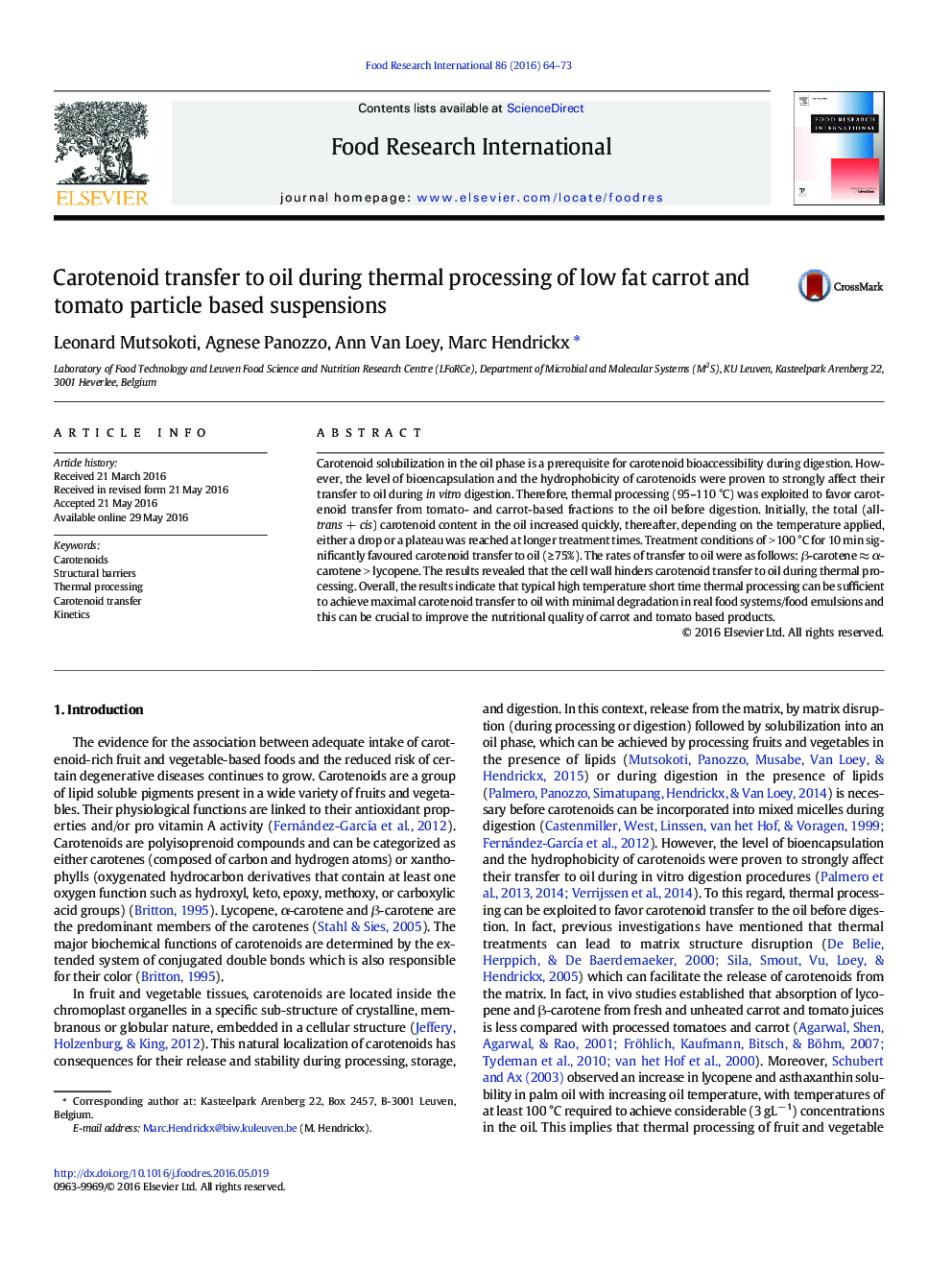| Article ID | Journal | Published Year | Pages | File Type |
|---|---|---|---|---|
| 4561179 | Food Research International | 2016 | 10 Pages |
•HTST facilitates maximal carotenoid transfer to oil with minimal degradation.•The cell wall hinders carotenoid transfer to oil during thermal processing.•Carotenoid transfer rate constants are influenced by carotenoid bioencapsulation.•Selective transfer to oil of a particular carotenoid depends on its hydrophobicity.
Carotenoid solubilization in the oil phase is a prerequisite for carotenoid bioaccessibility during digestion. However, the level of bioencapsulation and the hydrophobicity of carotenoids were proven to strongly affect their transfer to oil during in vitro digestion. Therefore, thermal processing (95–110 °C) was exploited to favor carotenoid transfer from tomato- and carrot-based fractions to the oil before digestion. Initially, the total (all-trans + cis) carotenoid content in the oil increased quickly, thereafter, depending on the temperature applied, either a drop or a plateau was reached at longer treatment times. Treatment conditions of > 100 °C for 10 min significantly favoured carotenoid transfer to oil (≥ 75%). The rates of transfer to oil were as follows: β-carotene ≈ α-carotene > lycopene. The results revealed that the cell wall hinders carotenoid transfer to oil during thermal processing. Overall, the results indicate that typical high temperature short time thermal processing can be sufficient to achieve maximal carotenoid transfer to oil with minimal degradation in real food systems/food emulsions and this can be crucial to improve the nutritional quality of carrot and tomato based products.
Graphical abstractFigure optionsDownload full-size imageDownload as PowerPoint slide
